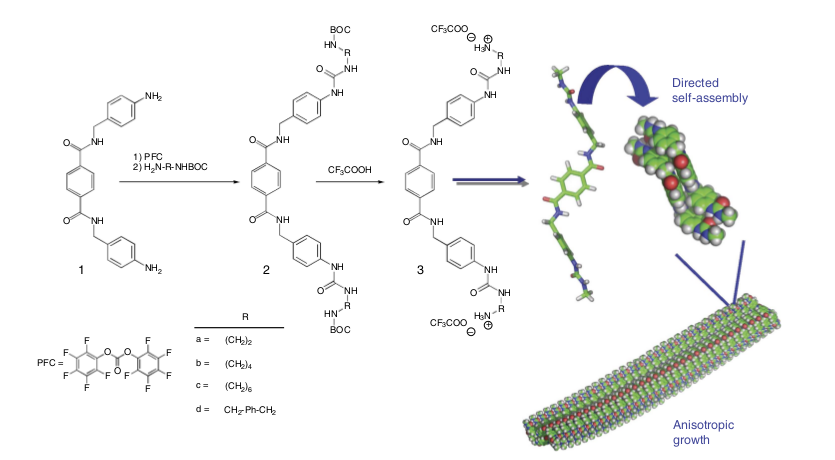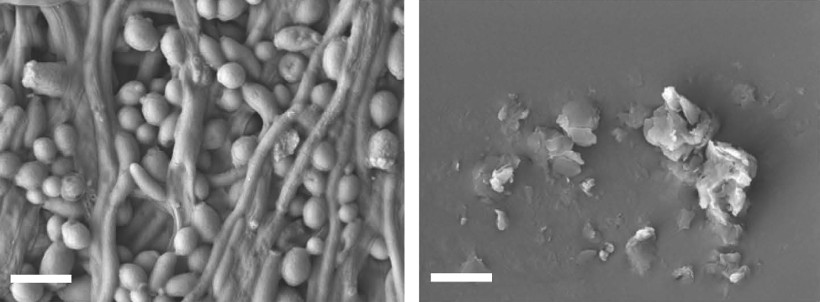The product of recycling plastic bottles will help fight infections.

Scientists from IBM Research, together with the Singapore Institute of Bioengineering and Nanotechnology, synthesized a polyethylene terephthalate-based polymer , deadly for fungal infections and at the same time low-toxic for mammalian cells. Polyethylene terephthalate (PET) is a cheap and common material that ordinary plastic bottles are made of.
Unlike most antibiotics and antifungal drugs, the polymer does not penetrate into the cells of the fungus, disrupting its metabolism, and destroys its cell membrane. Due to this, the development of drug-resistant infections is impossible - if pathogenic bacteria and fungi can adapt to almost any poison, forming new forms resistant to antibiotics, the new drug literally breaks the cells apart. At the same time, it acts quite selectively, almost without affecting the cells of the body.
')
During laboratory tests, the colony of the fungus was brought to 11 times in a row almost to complete destruction, treating with a reduced dose of the drug, and then allowed to recover - no signs of the development of drug resistance could be detected. At the same time, the common antifungal drug fluconazole after 6 such repetitions lost its effectiveness.
The fact that a new drug is a polymer, that is, a long chain of atoms consisting of repeating fragments, is of great importance for its effectiveness - agents that destroy the cell membrane do not act alone, but together, their local concentration turns out to be very high at the point of contact of the polymer chain with the membrane , while the average concentration of a substance in a solution is rather small.
To test the efficacy and safety of a new antifungal agent, a series of experiments was conducted on rats. Rats were infected with Candida albicans , one of the common types of fungus that often causes nosocomial infections, is resistant to many antifungal drugs and can cause serious complications from diseases or medical procedures related to the reduction or suppression of natural immunity. In rats, fungal keratitis was induced — an infection of the cornea of the eye that often occurs when wearing contact lenses.
Tests have shown the high efficiency of the new polymer even for drug-resistant forms of the fungus, while the cornea cells remained virtually intact. The blood cells also reacted poorly to the drug, although their destruction is a typical side effect for most drugs that act on the cell membrane.

Colony of C. albicans before and after treatment. On the right, the remains of destroyed cell membranes are visible.
Similarly, another polymeric antibiotic recently developed by IBM works in a similar fashion. It also destroys the cell membrane and is effective against antibiotic-resistant Staphylococcus aureus. About 18,000 people die from this infection in the United States alone every year. This type of bacteria has evolved under the conditions of the “arms race” between the antibiotics and the bacteria that has been going on since the discovery of penicillin - it is insensitive to almost all known antibacterial drugs.
Interestingly, the technologies and techniques used in the synthesis of new antimicrobial polymers are based on IBM's experience in the production of microchips. Materials capable of effectively destroying the cell membrane were obtained in the course of work on the technology of etching the microcircuit substrate on an atomic scale. Now IBM Research operates a full-fledged research program in the field of nanomedicine. Scientists believe that such drugs have a future, because the increasing spread of antibiotic resistant infections is already forcing some researchers to paint apocalyptic pictures of the world in which antibiotics no longer work.
An article about a new antifungal polymer was published in the journal Nature Communications on December 9 of this year.
Source: https://habr.com/ru/post/206378/
All Articles